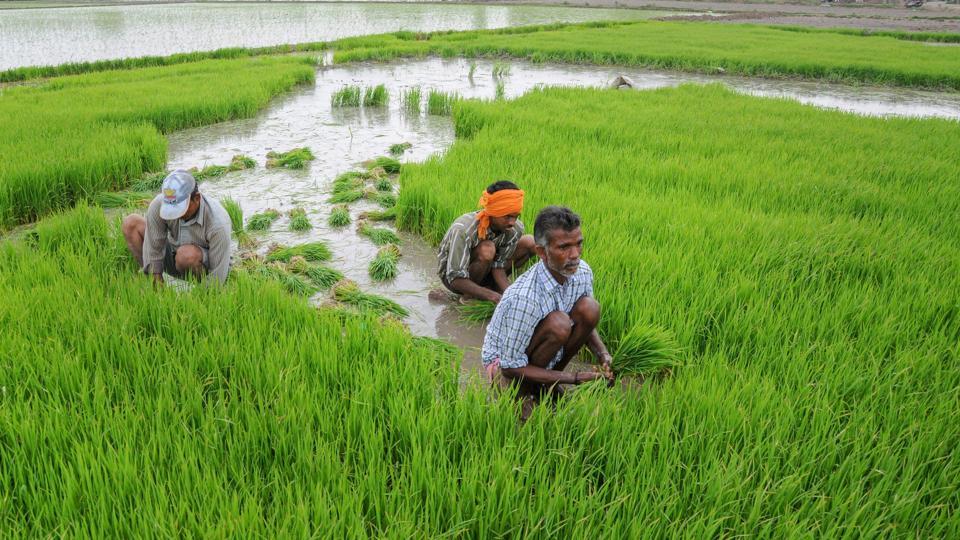Relevant for Sociology, General Studies & Essay.

- I spent international women’s day in Mangalagiri, in Guntur district of Andhra Pradesh, with Usha Rani. As a single mother for 17 years, she has raised two children (now in second-year college and in high school). Three years ago, she switched to natural farming. On less than half an acre, she practises multicropping, growing maize, banana, moringa, turmeric, chilli, gourd and guava. The products fetch her a premium in Vijayawada, up to two-and-a-half times per unit compared to what she would earn if the crops had been grown with chemical fertilisers and pesticides. Her input costs have fallen by half to a quarter. Usha has also taken a loan of more than Rs 100,000 to build a store from where to sell her inoculants of natural fertilisers and pesticides. Her income (including from the shop) is nearly five times what she earned from conventional farming.
- Agriculture in India needs to become more sustainable even as small and marginal farmers struggle to build resilience against many threats. First, they remain price-takers and economically vulnerable, beholden to traders who set prices, and with limited opportunities to sell at a time of their choice (due to poor storage). Further, decades of intensive agriculture have added to water stress and declining soil health. Farmers rely on groundwater for more than 60% of irrigation needs. Chemical fertilisers, once a boon to boost soil nutrients, have been applied so intensively (particularly urea) that the long-term health of soils is now of deep concern.
- A changing climate compounds the risks. My colleague, Dr Vaibhav Chaturvedi, estimates that under a low-climate-impact scenario, average production across six crops (rice, wheat, maize, oilseeds, sugarcane, cotton fibres) would fall by 5% by 2030 and by a quarter by 2100 relative to business-as-usual. If crop production were even more sensitive to average warming, a high-climate-impact scenario results in 40% fall in production. Larger states such as Maharashtra, Madhya Pradesh and Uttar Pradesh, which cultivate sugarcane and oilseeds, may be most affected by associated economic losses.
- Systemic transformation in agricultural systems must put the farmer at the centre. Experiments with natural farming should be evaluated accordingly. Agriculturalist Subhash Palekar has tried to popularise the practice: treating seeds with natural inoculants, applying natural formulations to increase soil microbial conditions, mulching the soil surface with organic material to reduce water evaporation, and soil aeration.
- Andhra Pradesh has made natural farming a statewide programme since 2016, reaching more than 354,000 farmers by the end of 2018. It plans to cover all six million farmers in nearly 13000 gram panchayats by 2024. Other states, including Karnataka and Himachal Pradesh, have expressed interest. NITI Aayog has conducted briefings for representatives from many states. Elsewhere, Sikkim prides itself on becoming the first organic farming state in the world.
- But anecdotal evidence cannot substitute for scientific monitoring and evaluation. For such large-scale experiments, even failures (if properly measured and investigated) can yield insights about conditions under which natural farming succeeds.
- Evaluations must be at two levels. First, interactions between the economic and the ecological. Do yields increase year-on-year or do they taper off over time? With scale, does crop diversification increase farmers’ bargaining power vis-à-vis powerful intermediaries? Are crops more resilient against extreme weather events? Are natural fertilisers sufficiently available, at lower costs, to ensure that farmers do not mix natural with chemical inputs? Could savings in fertiliser subsidies be redirected, say, to build cold-chain infrastructure? Does the programme trigger a circular economy, whereby natural farming draws on distributed energy services, which, in turn, support sustainable water management?
- Second, interactions between the agricultural and the social. Andhra Pradesh has leveraged a vast network of women’s self-help groups that give microloans to women farmers to start natural farming. With scale, will such finance suffice? If not, would small and marginal farmers (particularly women or those from lower castes) get credit without risking further debt traps? What are the implications for on-farm labour demand, farm wages, and rural-to-urban migration?
- Agriculture is under stress not just in India. Family farms, critical to livelihoods, produce 80% of the world’s food. But out of nine planetary boundaries, biosphere integrity and biochemical flows have already been breached, in part thanks to unsustainable agriculture; climate change and land-system change are under growing strain.
- When asked how she persisted with her experiments with natural farming despite initial risks, Usha Rani referred to a local saying, “We need to search where we lose things.” We have lost a lot — and will lose more. We would do well to pay heed.

